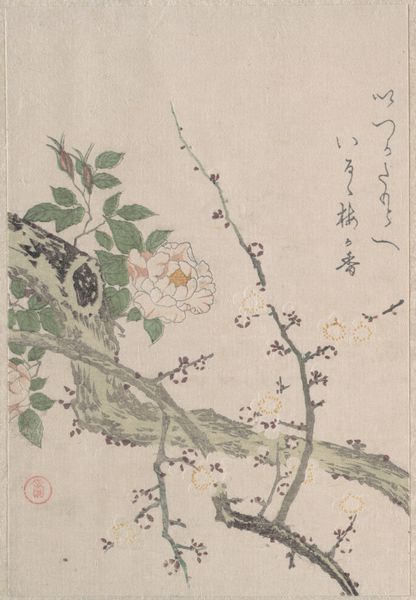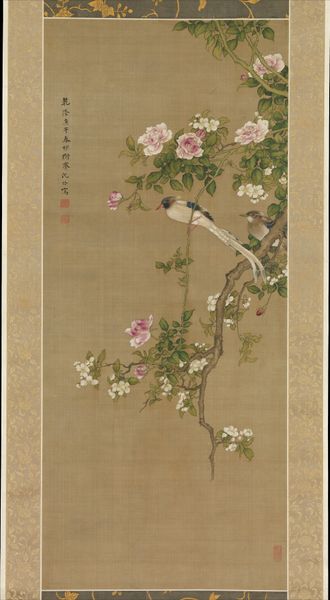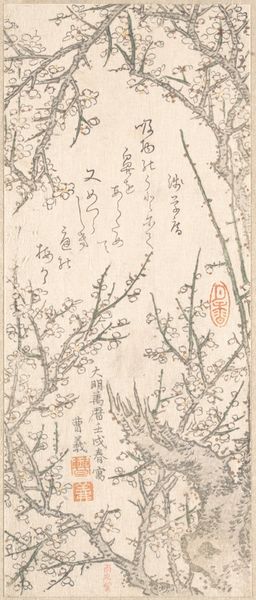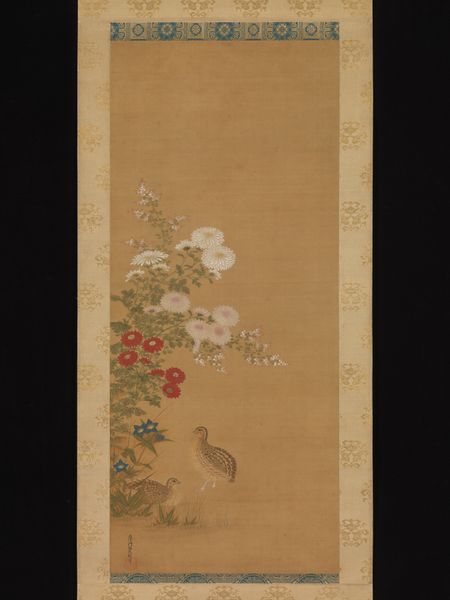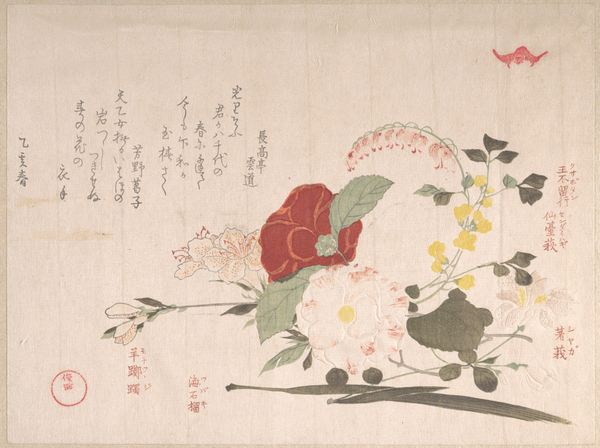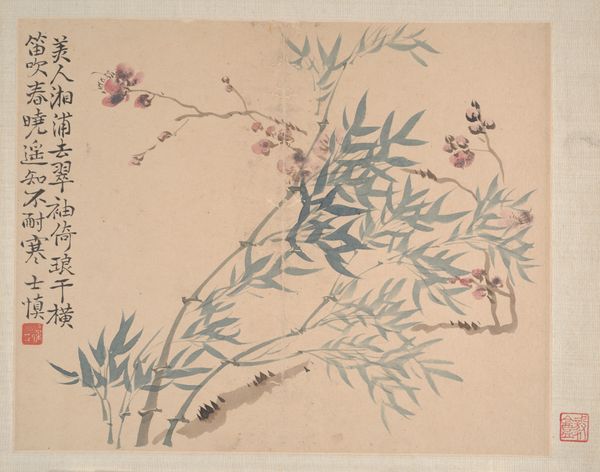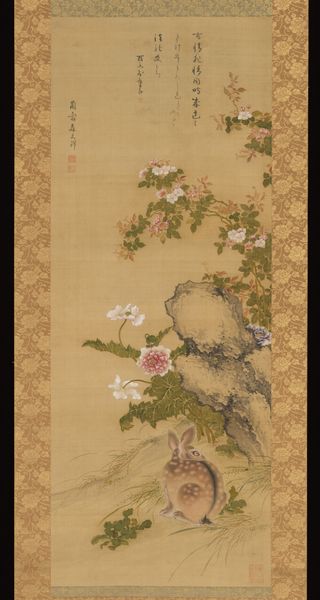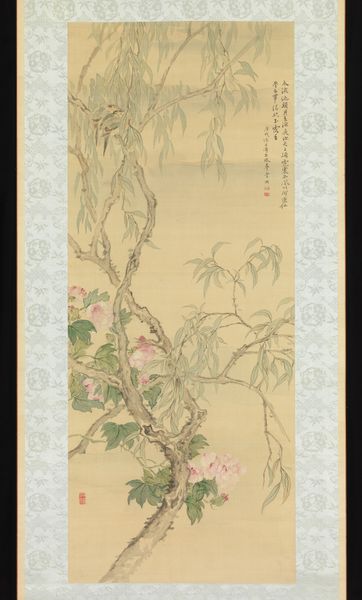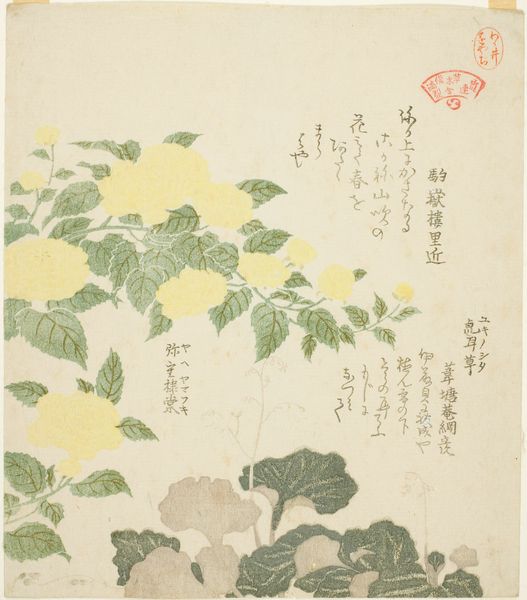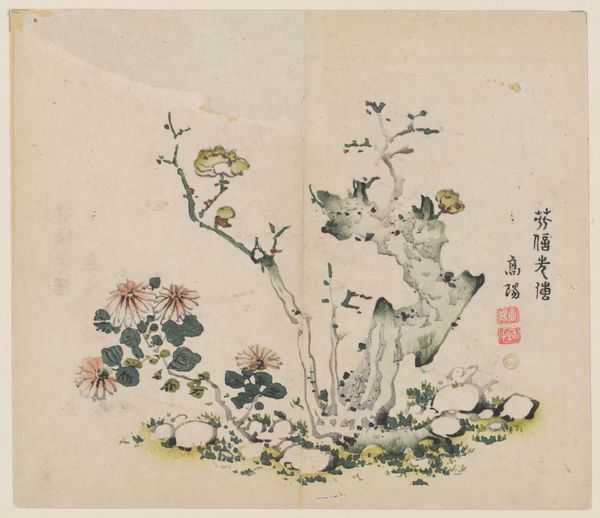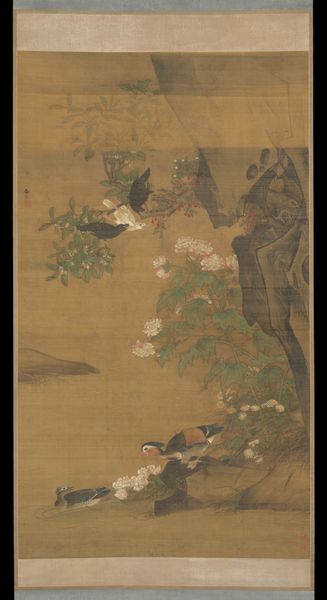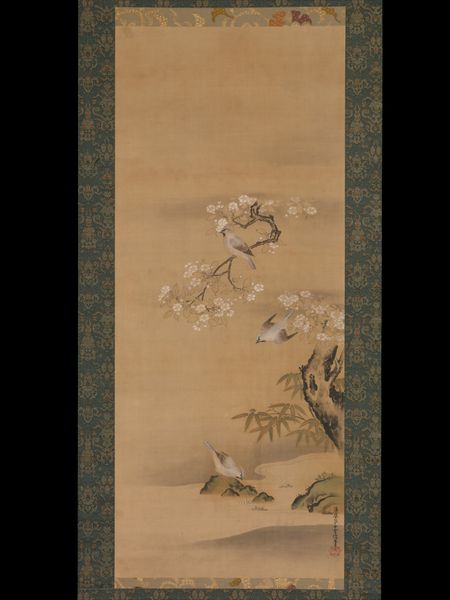
coloured-pencil, ink
#
coloured-pencil
#
asian-art
#
landscape
#
ukiyo-e
#
ink
#
coloured pencil
#
calligraphy
Dimensions: 35 13/16 × 12 5/8 in. (90.96 × 32.07 cm) (image)
Copyright: Public Domain
Curator: There’s an almost meditative quality to this piece. Editor: Agreed. It's Kubo Shunman's "Cherry Blossoms with Poems," likely created between 1790 and 1820. A stunning example of Ukiyo-e art, blending landscape and calligraphy traditions. What strikes you about that meditative mood? Curator: The delicacy, certainly. Look at the soft shading achieved through colored pencil and ink, barely there. The cherry blossoms themselves—ephemeral, like a breath. And then you have the text; what do you think it communicates? Editor: That's where it becomes truly rich. Poems inscribed directly onto the painting were a huge deal at the time. Beyond just illustrating a beautiful scene, they created a cultural dialogue. Were these his poems? Poems from other artists? Patrons? How does the inclusion shift its place? Curator: Hard to say for certain. However, given the careful placement, I sense a unification of image and word, both carrying symbolic weight. Blossoms for renewal, beauty, but also the poignant shortness of life, right? The calligraphy complements that with its expressive strokes. Editor: The ephemerality of blossoms mirrors that of fame and glory. But in terms of political shifts happening in Edo-period Japan, was he offering a lament or celebration of its world order through an artistic creation? Or perhaps, how can poetry make it more visible? I see these objects entering new markets; they can hold different roles. Curator: That contrast between permanence and fragility resonates through the symbolism. Perhaps it encourages viewers to look closer at the present moment or, in the grand scheme, observe society's fluctuations from this unique viewpoint. The branches carry the transient blossoms upward as we progress toward greater insight through verse. Editor: I find that focus on "the now," so powerful. Art doesn’t simply reflect; it creates possibilities for how it may enter into social contexts, maybe shaping them with its insights. That's one reason museums are still so important today. Curator: I completely agree; thank you for shedding that light. It enriches our experience. Editor: And you opened up how to understand the symbology on display, something easily taken for granted by its aesthetics alone. Thank you!
Comments
No comments
Be the first to comment and join the conversation on the ultimate creative platform.
